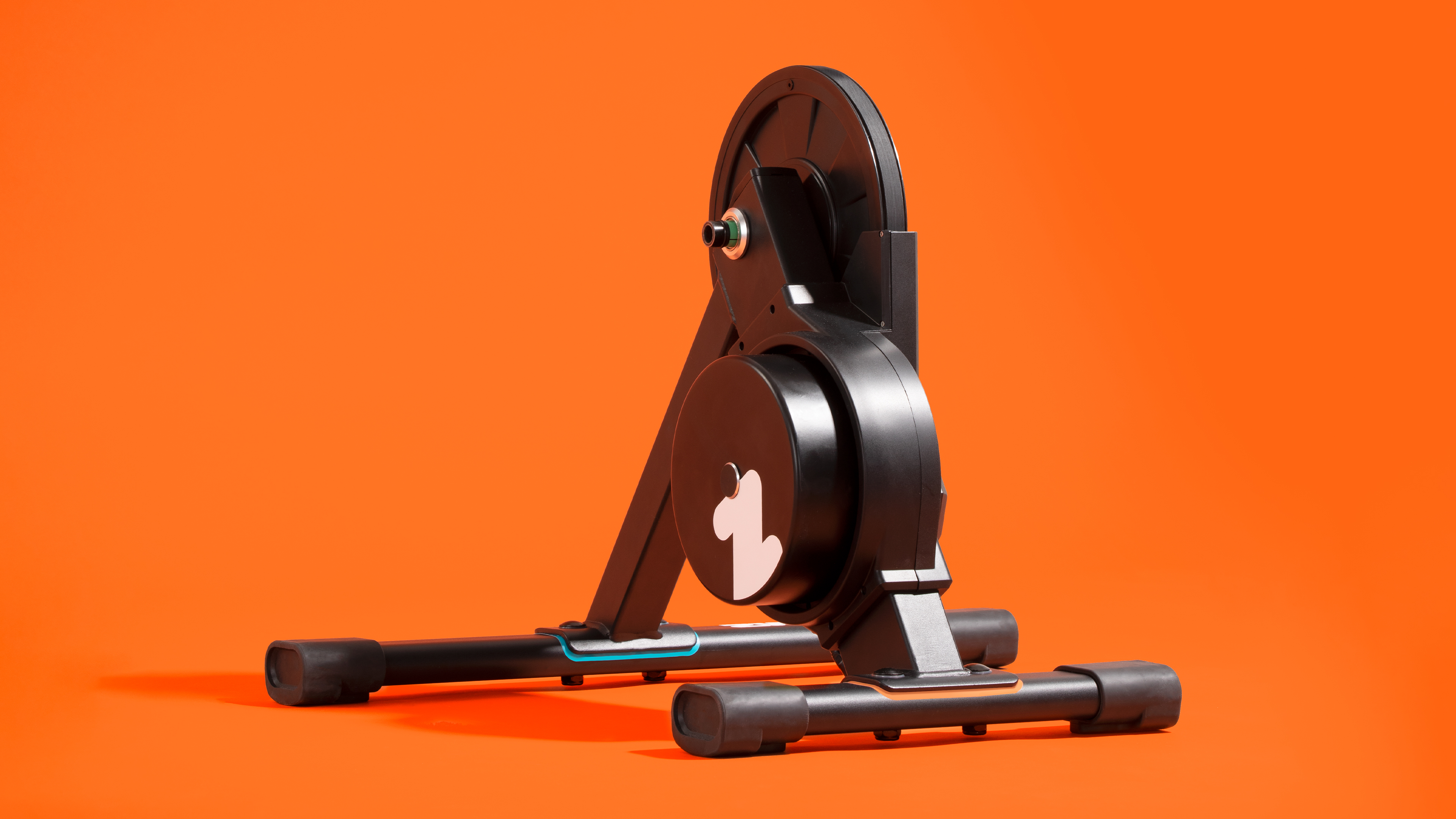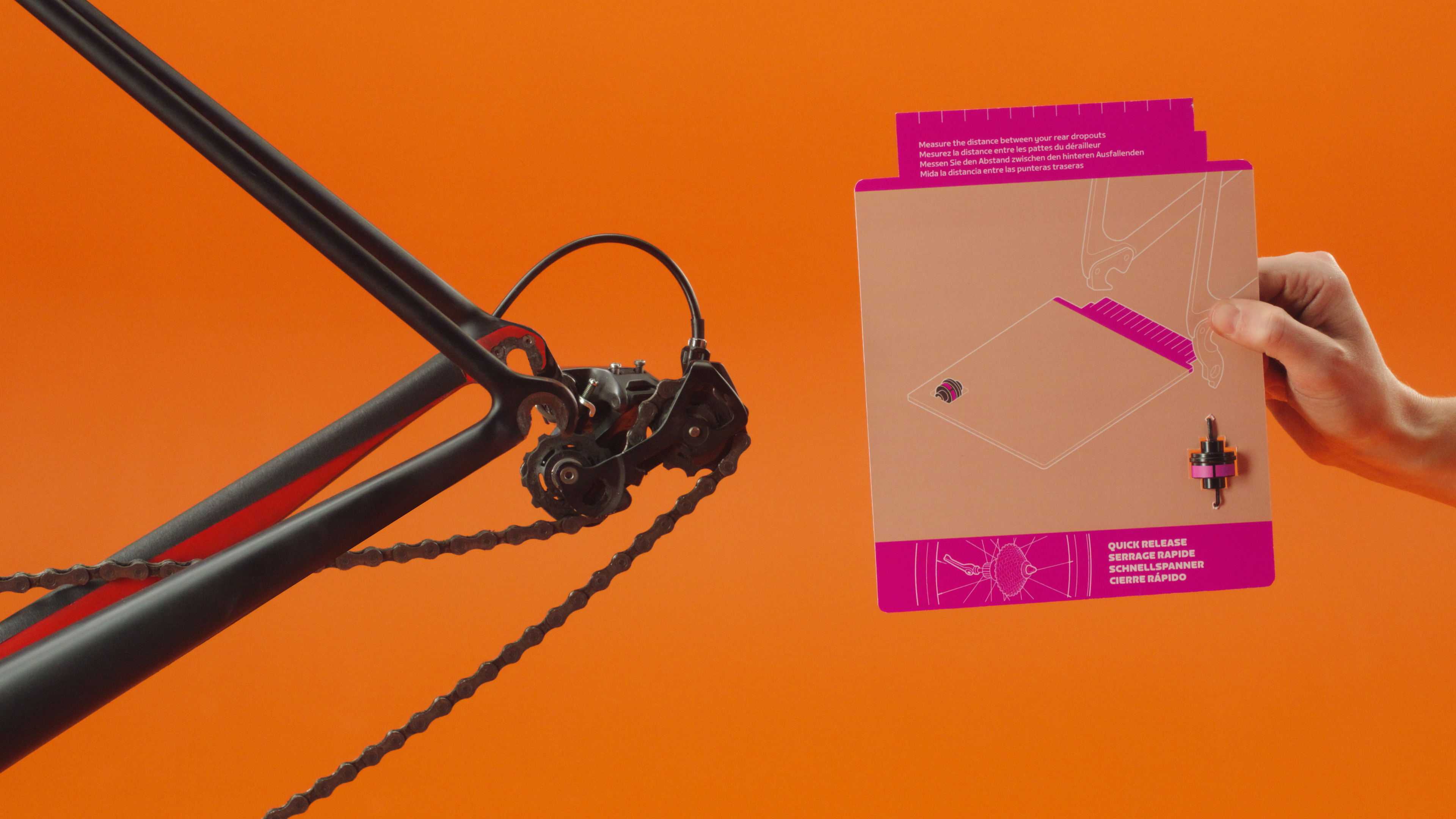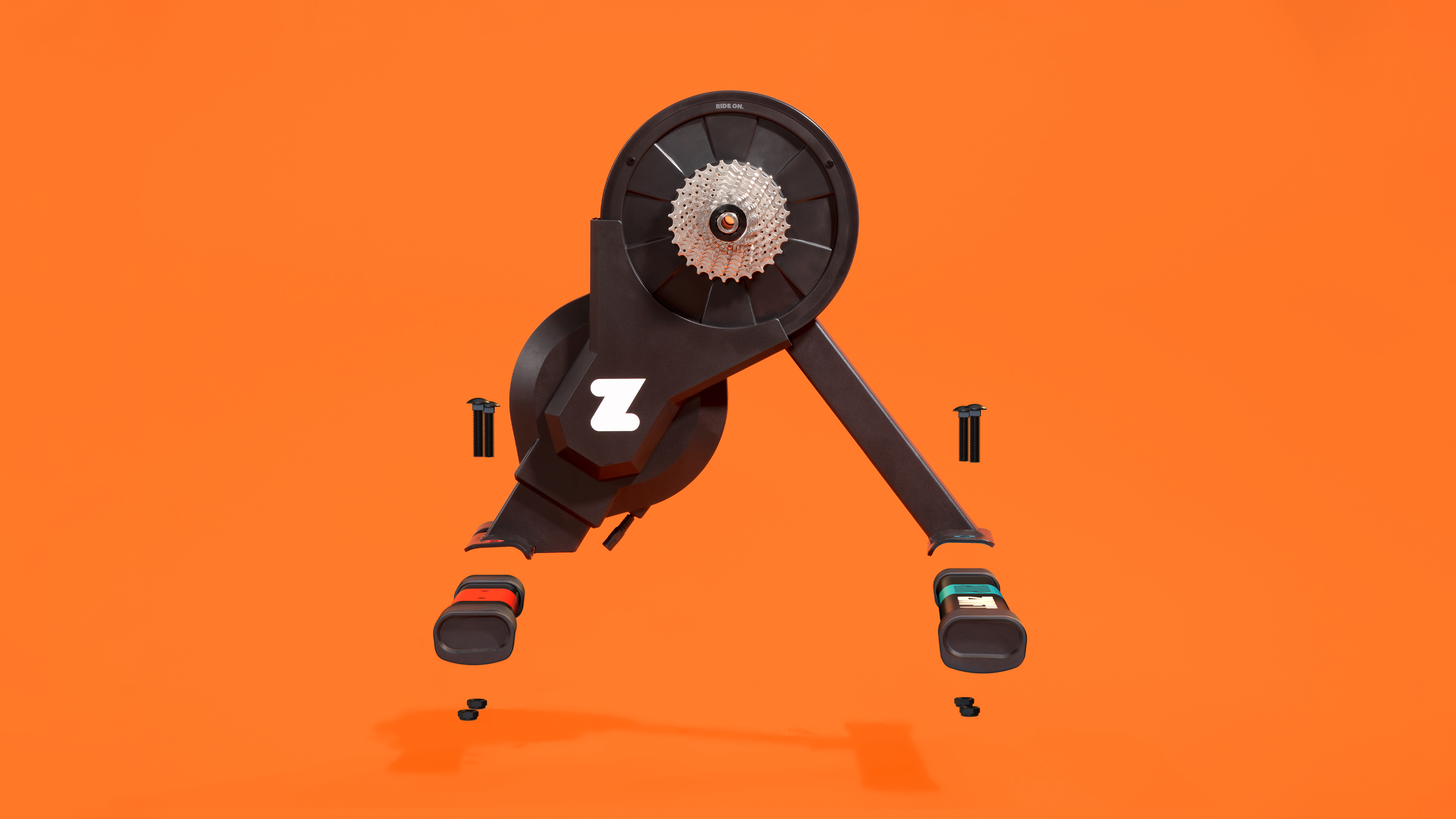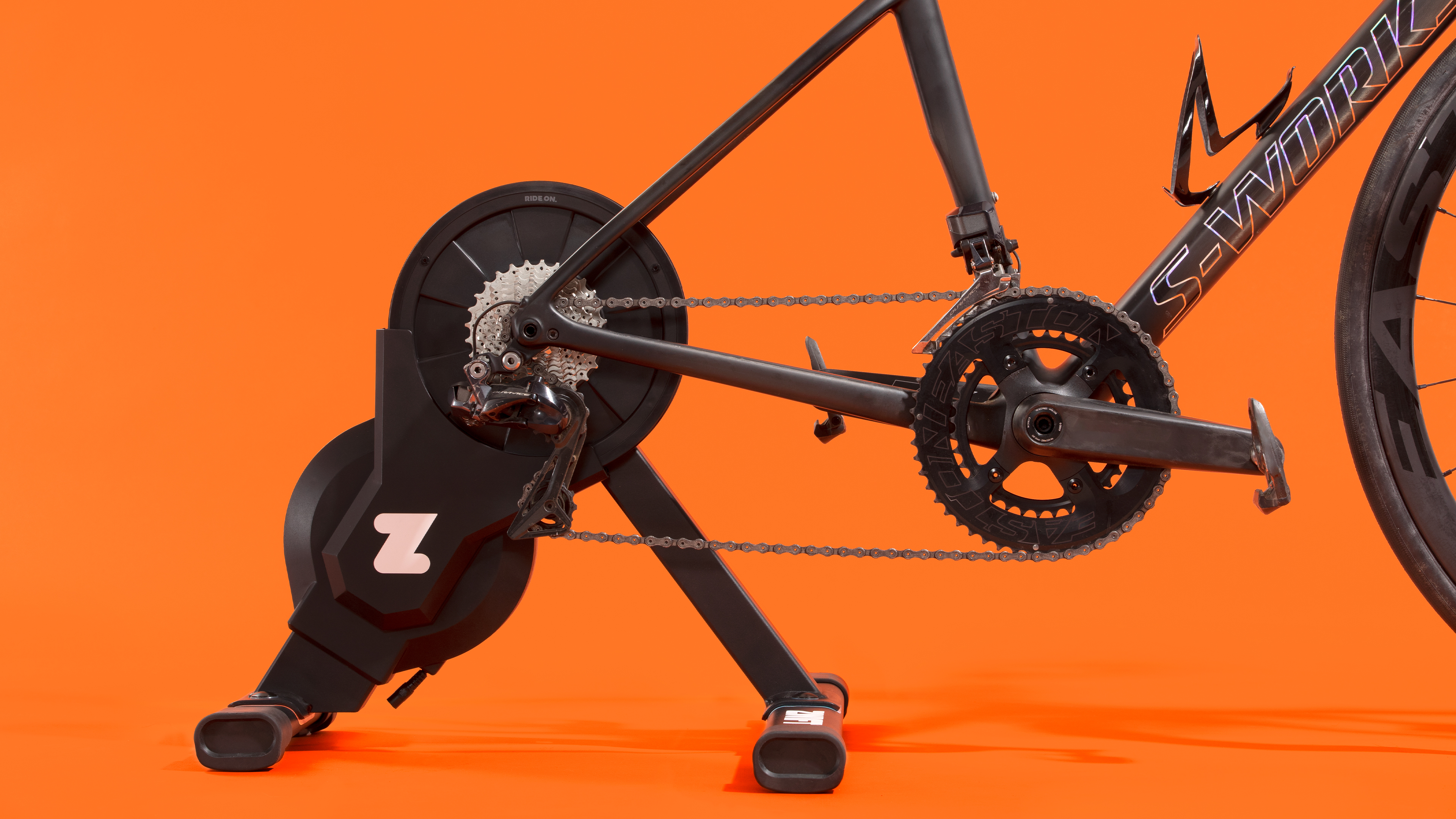Zwift finally launches its own turbo trainer, but it's not the Tron bike we expected
Zwift Hub is a direct drive smart trainer aimed at simplifying the Zwift setup experience

Market-leading indoor cycling app, Zwift, has today unveiled its first foray into hardware with the launch of its first-ever turbo trainer, Zwift Hub.
It is a direct-drive smart trainer, and the eagle-eyed among us may recognise it. It is based on the JetBlack Volt turbo trainer, but according to Zwift, it has had some small changes made. These include a redesigned upper to improve compatibility with more bikes, as well as a few internal changes to improve durability. It will be priced at a competitive £449 / $499 / €499, complete with the cassette of your choice.
Its top-level specs are competitive among the best turbo trainers too. It can provide a maximum resistance of 1800 watts, with power measurement being accurate to within 2.5%. It can simulate a gradient of 16%, which is almost double the average gradient of Zwift's toughest climb, Ven Top. Its 4.7kg flywheel contributes to a total system weight of 15kg, and it has a maximum rider weight of 130kg (254lb).
Simplification
The move to launch a turbo trainer may come as a surprise to Zwift followers.
Earlier this year, it was leaked that the company was working on a real-world version of its in-game Tron Bike, which would essentially become Zwift's competitor to the best exercise bikes, as well as a Zwift-designed turbo trainer. However, in May this year, Zwift was forced to abandon those plans and cut a reported total of 150 jobs.
"Given the current macroeconomic environment, we have decided to scale back our hardware offering, pausing plans to launch a smart bike," Zwift explained in a statement at the time. Put simply, that 'macroeconomic environment' was that fewer people were taking up indoor cycling than in previous years, as the pandemic-induced indoor cycling 'bubble' began to burst.
So instead, Zwift has focussed on the beginner market where it loses a large number of potential customers due to the confusion found during setting up the hardware needed to ride on Zwift. Unlike Peloton, which is an all-in-one system that locks together the bike and the app and walks the user through the setup process, Zwift can be used with a variety of different hardware solutions, from smart trainers, smart bikes, or power meters and speed sensors fitted to bikes mounted to basic trainers. This is great, as it opens up Zwift to a much wider audience and a greater spread of budgets, while allowing those setups to be used with other apps too.
Get The Leadout Newsletter
The latest race content, interviews, features, reviews and expert buying guides, direct to your inbox!
However, it also means that there are a lot of questions to overcome when setting everything up. From working out the hardware compatibility between a bike and a turbo trainer, to working out the software compatibility between their chosen trainer and the device on which they're running the Zwift app. For example, in order to fit a bike to a direct drive turbo trainer, one would need to work out what type and size of rear axle they have and what size cassette they have. They may then need to buy the correct versions of those, and fit them accordingly, and that might need a freehub change too.
A different set of questions arises for wheel-on turbo trainers, and that's before considering whether they're going to run it via Bluetooth or ANT+.
In a bid to overcome many of these hurdles, the new Zwift Hub trainer has focussed on making things as easy as possible for the customer. Part of this is the ability to choose the cassette you need during the purchase process, assisted by a collection of video walkthroughs for those who are unsure. The Zwift Hub will then arrive with the cassette preinstalled and ready to ride.

Another example of this easing of the customer journey is how Zwift has packaged the axle adaptors. Most turbo trainers nowadays include the most common adaptors for thru-axles and quick-releases, but working out which is which requires prior knowledge of which your bike was designed for. Rather than expecting its customers to know this, Zwift's adaptors are packaged on well-thought-out cards, each cut to a specific width that correlates to the various axles found on bikes, and printed with instructions to help the user work it out.
For example, if your bike has thru-axles, but you're unsure if it's 142mm or 148mm, slide each card between your dropouts. The one that fits will have the correct adaptor mounted to it.
The theme continues through to the feet of the trainer, which need to be fitted prior to use. Instead of leaving people to figure out which way round they go, Zwift has colour-coded them with the legs onto which they fit. As long as you match the coloured feet with the corresponding leg, there's no chance of fitting the feet the wrong way round.

Mounting your bike to the turbo trainer is then performed as per other systems - likewise pairing the Zwift Hub to your app - but as with the cassette choice earlier on, there are walkthrough videos available for every step of the process.
The simplification continues through to the software, and will complement the recent redesign of the in-game menus. The Zwift Hub can be updated and managed via the Zwift companion app. Although it's not currently available, an upcoming firmware update will also ensure the Zwift Hub turbo trainer will automatically calibrate itself. This is a feature currently reserved for top-tier smart turbo trainers.
"When we started on our hardware journey, it was important that the hardware served the primary purpose of accessing and elevating the core game experience," Explains Zwift CEO and founder, Eric Min. "Getting set up on Zwift hasn’t been an easy process. It can be hard to know exactly what equipment you need to Zwift, and that equipment can be costly. Zwift Hub will help us deliver our mission to make 'more people, more active, more often' by making it both easier, and more affordable to get set up on Zwift."
No locked ecosystem
Aside from the Zwift RunPod - a Bluetooth cadence sensor that runners can use to connect their shoes to Zwift whilst running on a basic treadmill - the Zwift Hub marks the brand's first major step into selling hardware. It's not the first indoor cycling app to also manufacture and sell turbo trainers. Wahoo, after buying the Sufferfest and RGT Cycling, successfully runs hardware and software businesses side by side.
Luckily for cyclists, neither brand has suggested following the Peloton model of locking their products together. In fact, Zwift's director of PR & External Communications, Chris Snook, confirmed that the Zwift Hub will indeed remain open and compatible with Zwift's competitor apps such as Wahoo Systm or TrainerRoad.

Rigorous testing
Zwift says it has put the Zwift Hub through an extensive testing process to ensure durability, compatibility and continued functionality. This included putting four production-level units through an equivalent of two years worth of real-world hard usage, logging more than 1300 hours of testing. This included taking real-rider Zwift data and running it through rigs which can simulate the same workout repeatedly. This has then been backed up by a group of real riders, who were hired specifically to run specific workout tests through the trainer.
Compatibility testing included a simple yet savvy collaboration with a London-based chain of bike shops. Zwift simply left a Zwift Hub trainer in each store and every bike that came through the workshop was tested for compatibility. The result was over 500 different bikes from 70 different brands confirmed, across all spectrums of cycling from time trial to mountain bike. This included frame sizes ranging from 45cm to 64cm, as well as groupsets ranging from eight to 12 speed from all the major brands.
The Zwift Hub will only be sold directly at Zwift.com, and will be available to buy from the 3rd of October.
Looking to elevate your indoor training sessions? Explore our latest Zwift promo codes and save on smart trainers and accessories.

Josh is Associate Editor of Cyclingnews – leading our content on the best bikes, kit and the latest breaking tech stories from the pro peloton. He has been with us since the summer of 2019 and throughout that time he's covered everything from buyer's guides and deals to the latest tech news and reviews.
On the bike, Josh has been riding and racing for over 15 years. He started out racing cross country in his teens back when 26-inch wheels and triple chainsets were still mainstream, but he found favour in road racing in his early 20s, racing at a local and national level for Somerset-based Team Tor 2000. These days he rides indoors for convenience and fitness, and outdoors for fun on road, gravel, 'cross and cross-country bikes, the latter usually with his two dogs in tow.